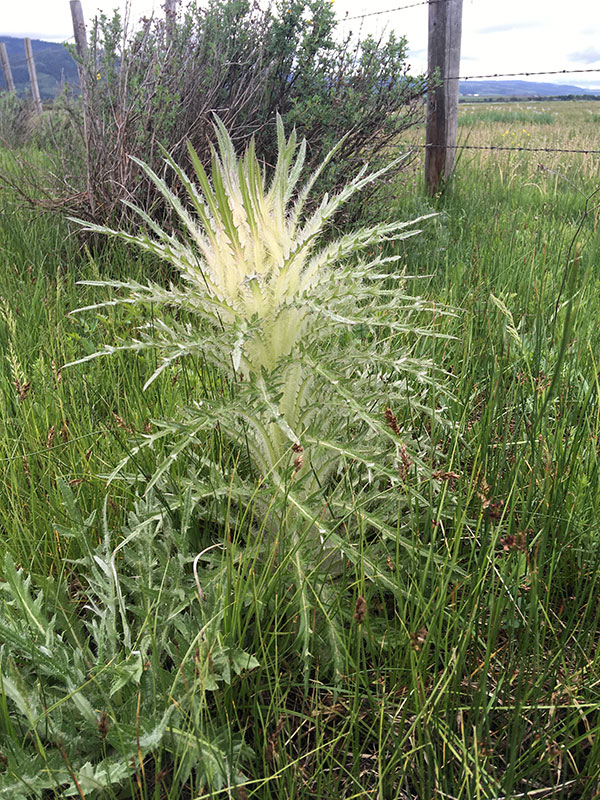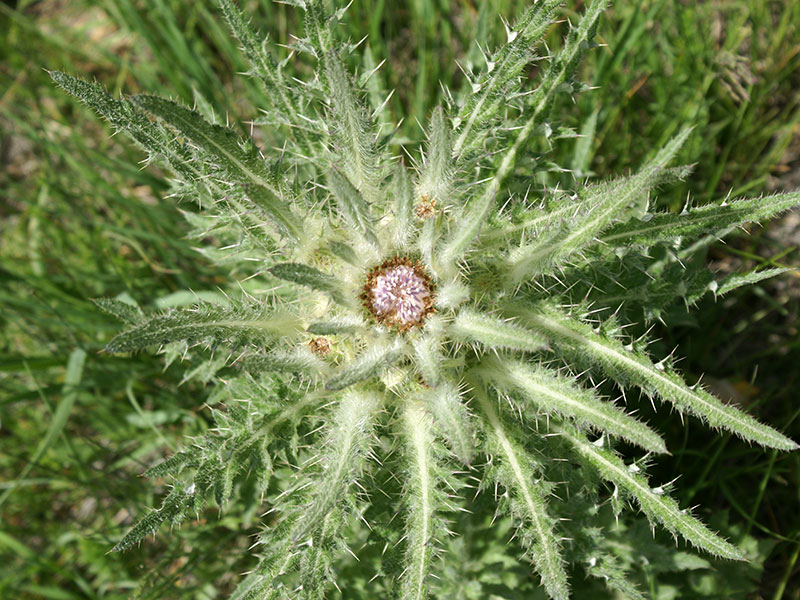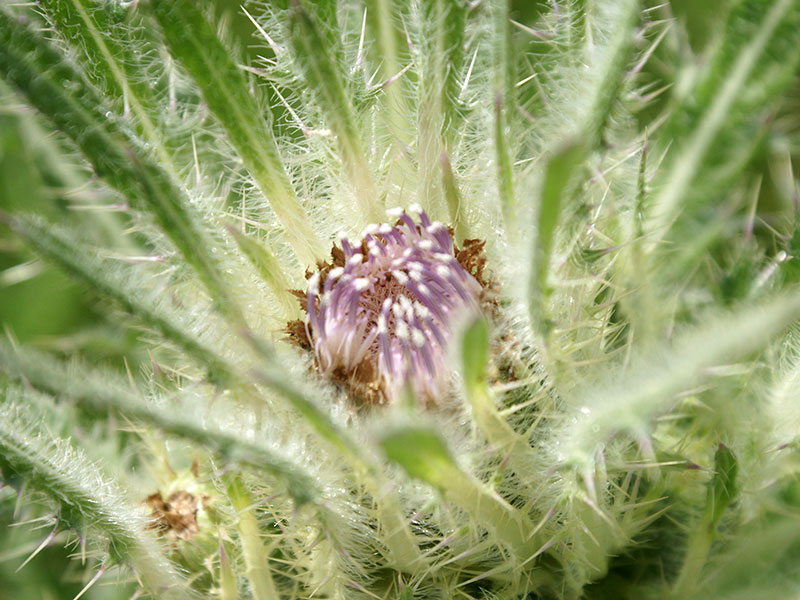Cirsium scariosum / elk thistle
- usually tall, quite prickly thistle with deeply lobed, spiny leaves
- large, lavender (pink to purple) flowers hidden by the long leaves
- covered with white hairs giving it a silvery look overall
- in moist areas, in full sun
Also known as: Evert’s thistle, meadow thistle, dwarf thistle
The elk thistle is a biennial or short-lived perennial like most other thistles. And of all of them, it is the only thistle that can bloom at ground level… this is called acaulescence, or having no (or a very short, below ground) stem. There is a photo of this in the gallery. This may be the source of one of its common names, dwarf thistle. Otherwise, it is usually rather tall – up to 4 feet – and stands above other plants in a moist meadow.
Another common name, Evert’s thistle, is also worthy of comment: it comes from a guy named Truman Everts. He was part a group exploring Yellowstone in 1870, but he got separated from the rest of the party. To make matters worse, he got thrown by his horse and broke his quite strong spectacles. With all that, he couldn’t hunt for game. In lieu of starving to death, he began eating thistle roots which a botanist in the party had said were edible. They kept him alive until he was rescued a 37 days later.
If you want to try this (not the whole month thing perhaps), Tom Elpel, author of Botany in a Day, has a nice web page on elk thistle as an edible plant. Because it is so easy to recognize and because he gives good details on how to eat it, you could try, even without asking your mother. It seems that Everts could have done well by eating more parts of the plant… but neither his botanist nor his mother told him that.
So… recognizing it… like all of our native thistles, elk thistle is covered in white hairs that give them a grey or silvery look. The entire plant, including its long, deeply lobed, toothed leaves, is covered with spines as well as those hairs. The bases of the leaves are quite white. Unlike most plants, the elk thistle stem narrows very little from bottom to top. It has white to purple – or lavender – flowers clustered at the top and hidden amongst the foliage.
Elk thistle blooms in early spring along mountain streams and in wet meadows (it won’t grow in shade). The photos in the gallery were all taken in early June. Exotic thistles bloom much later. The plants are usually easily identified by their size (it is our largest native thistle), by their many prickly pinnate leaves, and by the bracts that cup the flower and extend well above the flower heads. The flowers are pinkish but they turn brown as the plant matures. The leaves around the flower heads extend well past the flower itself so you can best see them only from above. Individual plants may have one or many flower heads.
Elk thistle propagates itself well. It is self-fertile meaning it can set seed (copiously) even without pollinators. Thus, it can grow dense enough to be a “problem” in fields used for grazing or recreating, so you can find stuff on the web on how to kill it (while decrying the fact that this is native, not an exotic). I haven’t seen it be a problem like that… indeed, I have seen relatively few plants, but then I don’t wander across too many wet pastures. Otherwise, elk thistle likes moist to wet soil and is usually found in open meadows or along roads with stream sides.
| Color | |
|---|---|
| Family | |
| Blossom size | |
| Inflorescence size | |
| Inflorescence type | |
| When? | |
| Where? |







